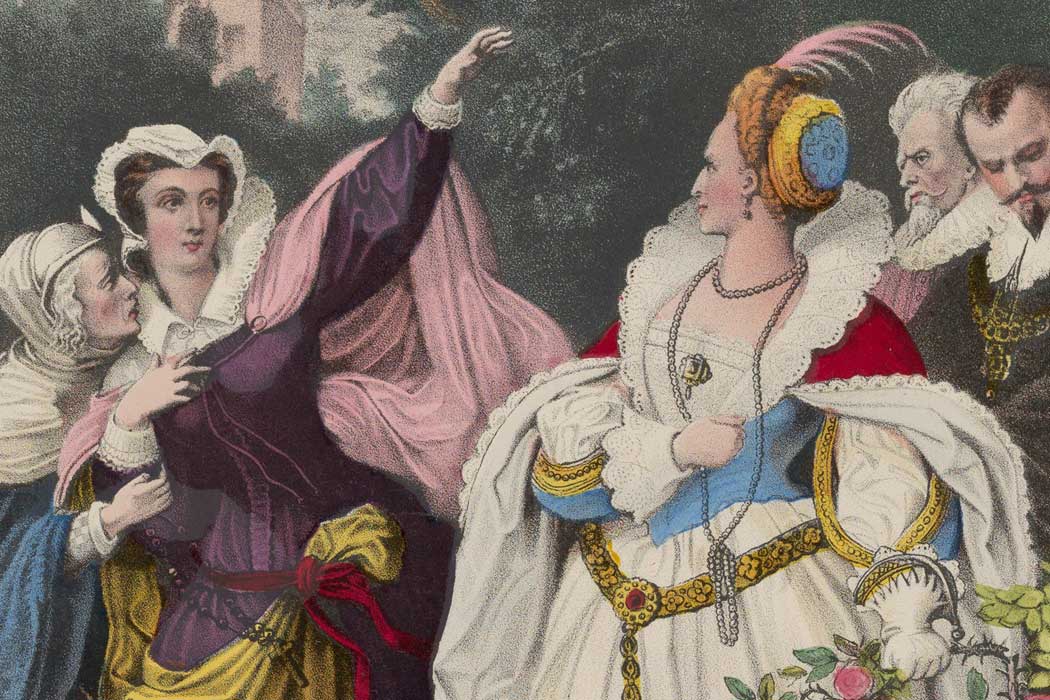Four hundred and fifty years ago this month was a crucial period in the life of the twenty-five-year-old Mary, Queen of Scots. Already twice widowed—her second husband was strangled—she had been forced by Scottish nobles to abdicate as Queen of Scotland in July 1567. On May 2, 1568, she escaped from a castle in the middle of Loch Leven. Still popular among Scots Catholics, she quickly gathered an army of six thousand supporters. Her forces were defeated at Langside in Glasgow on May 13. On May 16, she fled to England, hoping for assistance from Queen Elizabeth, her first cousin once removed.
This was a mistake. The Protestant Elizabeth feared that the Catholic Mary would ignite Catholic rebellion against her reign. Elizabeth had already been secretly funding Mary’s Scottish enemies. Now she had Mary locked up.
With more than a dozen servants and the run of certain estates, Mary’s imprisonment was initially much gentler than most sixteenth-century prison sojourns. Still, Mary, who was also the former Queen Consort of France, was kept a royal prisoner for nearly nineteen years. Finally, after a two-day trial in 1586, she was convicted of charges of plotting to kill Elizabeth and claim the English throne.
Why did it take so long to resolve what to do about Mary, Queen of Scots? As a sovereign, even a deposed one, Mary was no ordinary prisoner. Her status went to the heart of the relationship between monarchs and their subjects, not to mention the complex intertwining of British and continental royalty and the wars of religion.
How could queens and kings “be held legally accountable for their alleged misdeeds”? One way, as scholar Cathy Shrank shows, was to be undermined by a long campaign of discrediting propaganda. The case against Mary was waged for years before the actual trial. Shrank traces the course of the campaign against Mary in dialogues, a common Tudor genre; letters; and broadside ballads in Scots, French, and English. Technically, Elizabeth had banned publications hostile to Mary, but the material still circulated in Britain.
In this “anti-Marian” propaganda, Mary was portrayed as a modern Medea and “deadlie & mischeuous” Clytemnestra, classical allusions to monstrous mothers and women. Like a “furie,” Delilah, and Semiramus, she used “her lewde lust and sensualitie” to corrupt. Above all, she was a “serpent in [Elizabeth’s] bosom.” Her antithesis in all this was of course the Virgin Queen, Elizabeth.
In addition, the casket letters, named after the letter box they were supposedly found in, were used as evidence of Mary’s adultery. These purported to be love letters to her lover and eventual third husband, James Hepburn, 4th Earl of Bothwell, who was widely considered responsible for her second husband’s murder. The letters were translated into five languages, but the originals—whether they were forgeries to begin with is still debated—were lost.
Meanwhile, plots and counterplots over Mary raged throughout Scotland, England, and Europe. A civil war simmered in Scotland; Catholic Earls in the north of England rebelled; the Spanish throne got involved in planning to free Mary; the Pope supported her.
All the writing against Mary had an effect, giving a popular impetus to the parliamentary petition that urged the Queen to execute the Queen. After that execution in February, 1587, Elizabeth claimed she was tricked into signing the death warrant.
A year after the execution, Philip II of Spain sent the Armada to bring Catholicism back to England. That didn’t go as planned. Elizabeth ruled for nearly two more decades. Upon her death in 1603, the crowns of England and Scotland were merged in union and the throne went to James VI of Scotland—Mary’s son, whom she hadn’t seen since he was thirteen months old.
Editor’s Note: This story was updated to delete an extra verb in the subheading.







